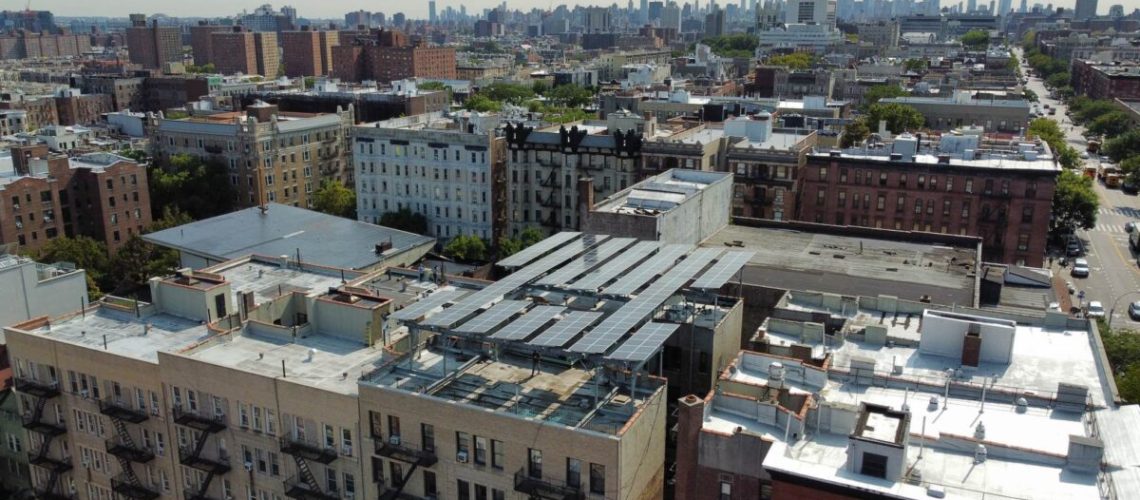Two Notices of Funding Opportunities total $20 billion and aim to mobilize private capital into clean tech projects to create jobs and lower energy costs.
The U.S. Environmental Protection Agency (EPA) launched two Notices of Funding Opportunity (NOFOs) for $20 billion for two competitive grant opportunities.
The grants are intended to mobilize private capital into clean technology projects to create good-paying jobs and lower energy costs for American families, especially in low-income and disadvantaged communities. In addition the projects will cut harmful emissions, thus protecting people’s health and tackling the climate crisis.
“Communities on the front lines of the climate crisis will be the first to reap the benefits of President Biden’s historic investments in the clean economy,” said Michael S. Regan, EPA administrator. “The Greenhouse Gas Reduction Fund will spur private investment into clean technology projects and expand economic opportunity for communities that have been left behind, for families that want lower energy costs, and for workers who need good-paying jobs. This is what President Biden’s Investing in America agenda is all about.”
One of the grant opportunities is the National Clean Investment Fund, which will provide grants of up to $14 billion to support two to three national clean financing institutions in partnering with the private sector to provide financing for tens of thousands of clean technology projects nationwide.
By mobilizing significant private capital, these national nonprofits will work to ensure that every dollar of public funds generates several times more in private investment. At least 40% of the funds from the National Clean Investment Fund must be dedicated to low-income and disadvantaged communities, including those that are rural communities, tribal communities, communities with environmental justice concerns, energy communities, and persistent poverty counties.
The second grant opportunity is the Clean Communities Investment Accelerator, which will provide grants of up to $6 billion to support two to seven hub nonprofit organizations. The goal is to enable the organizations to provide funding and technical assistance to public, quasi-public, not-for-profit, and non-profit community lenders working in low-income and disadvantaged communities.
These non-profits can potentially enable community lenders including community development financial institutions, credit unions, green banks, housing finance agencies, and minority depository institutions to finance clean technology projects in low-income and disadvantaged communities. 100% of the funds from the Clean Communities Investment Accelerator will be dedicated to low-income and disadvantaged communities.
“By funding a national network of non-profit financing institutions that will deliver capital to tens of thousands of clean technology projects in local communities across the country, the Greenhouse Gas Reduction Fund will transform local economies and help us meet our climate goals,” said Jahi Wise, senior advisor and acting director of the Greenhouse Gas Reduction Fund. “Investments like this one will expand opportunities for the communities that have too often been left out and left behind.”
The two grant opportunities fall under the Greenhouse Gas Reduction fund that is part of the the Inflation Reduction Act. They build on the $7 billion Solar for All competition, in which the EPA will award up to 60 grants to states, territories, Tribal governments, municipalities, and nonprofits to expand residential solar access for low-income and disadvantaged communities.
The program will enable grantees to “expand existing low-income solar programs or design and deploy new Solar for All programs nationwide,” EPA said in a notice. Applications for the Solar for All program must include a notice of intent, which is due from interested parties by July 31.
All three competitions are intended to help meet the President’s climate goals of reducing greenhouse gas emissions 50% to 52% below 2005 levels in 2030, and achieving net zero emissions by no later than 2050. They also help advance the President’s commitment to environmental justice and the Justice40 Initiative, which sets the goal that 40% of the overall benefits of certain Federal investments in climate, clean energy, and other areas flow to disadvantaged communities that are marginalized, underserved, and overburdened by pollution. At least $18.6 billion of the $27 billion across the Greenhouse Gas Reduction Fund is dedicated to low-income and disadvantaged communities.
The deadline to apply to the grants is October 12, 2023. EPA intends to make two-to-three awards under this competition. Applicants must be eligible nonprofits as defined in Section 134(c)(1) of the Clean Air Act and as further explained in the NOFO.
Coalitions, led by an eligible nonprofit, are also eligible to apply to this competition. Additional details on eligibility can be found in Section III of the NOFO. EPA has published the NOFO for this grant competition on grants.gov.



